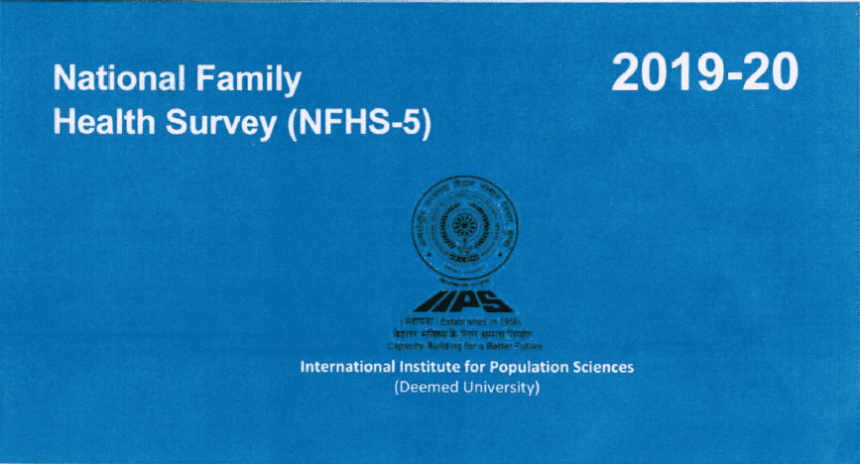The Phase-I of National Family Health Survey (NFHS-5) which takes account of key indicators on population, reproductive and child health, family welfare, and nutrition is released on 12th December 2020.
The report was released by Dr. Harsh Vardhan, Union Minister of Health and Family Welfare, Government of India.
The NFHS-5 is being conducted in around 6.1 lakh sample households to provide disaggregated data up to district levels.
In this phase-I, 22 states/UTs Andhra Pradesh, Assam, Bihar, Goa, Gujarat, Himachal Pradesh, Karnataka, Kerala, Maharashtra, Manipur, Meghalaya, Mizoram, Nagaland, Sikkim, Telangana, Tripura, West Bengal, Andaman Nicobar Island, Dadra, and Nagar Haveli and Daman and Diu, Jammu & Kashmir, Ladakh, and Lakshadweep were covered. The fieldwork in the remaining 14 (Phase-II) States/UTs is currently in progress and expected to be available around May 2021.
All the rounds of NFHS have been conducted by the International Institute for Population Sciences (IIPS), Mumbai, as the national nodal agency and group of survey organizations. This is the fifth round of the survey and the previous four rounds were conducted in 1992–93, 1998–99, 2005–06, and 2015–16.
Key findings:
The Total Fertility Rates (TFR) has further declined in comparison to the same estimated during NFHS-4 in almost all the Phase-I States and UTs. The replacement level of fertility (2.1) has been achieved in 19 out of the 22 States/UTs and only 3 states viz. Manipur (2.2), Meghalaya (2.9), and Bihar (3.0) have TFR above replacement levels now.
Overall Contraceptive Prevalence Rate (CPR) has increased substantially in most States/UTs and observed highest in HP and WB (74%).
Unmet needs of family planning have witnessed a declining trend in most of the Phase-1 States/UTs. The unmet need for spacing which remained a major issue in India in the past has come down to less than 10 percent in all the States except Meghalaya and Mizoram.
Full immunization drive among children aged 12-23 months has recorded substantial improvement across States/UTs/districts.
There is a also noted rise in institutional births. Over four-fifths of the women delivering in institutions in 19 States and UTs. There is also a rise in C-section deliveries in many States/UTs, especially in private health facilities.
The sex ratio at birth has remained unchanged or increased in most States/UTs. The majority of the states are in a normal sex ratio of 952 or above.
The percentage of households with improved sanitation facility and clean fuel for cooking has increased in almost all the 22 States/UTs over the last four years (from 2015-16 to 2019-20)
Women’s empowerment indicators portray considerable improvement across all the States/UTs included in Phase 1. There is a substantial rise in the number of women operating bank accounts. In Bihar, an increase in the number of women operating bank accounts surged from 26 percent to 77 percent. More than 60 percent of women in every state and UTs in the first phase have operational bank accounts.
The report can be accessed here.

